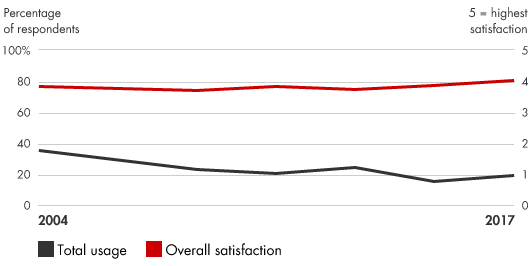Management Tools
Price Optimization Models are mathematical programs that calculate how demand varies at different price levels and then combine that data with information on costs and inventory levels to recommend prices that will improve profits. The modeling allows companies to use pricing as a powerful profit lever, which often is underdeveloped. Price Optimization Models can be used to tailor pricing for customer segments by simulating how targeted customers will respond to price changes with data-driven scenarios. Given the complexity of pricing thousands of items in highly dynamic market conditions, modeling results and insights helps to forecast demand, develop pricing and promotion strategies, control inventory levels and improve customer satisfaction.
Usage and satisfaction among survey respondents

How Price Optimization Models work:
Price Optimization Models should factor in three critical pricing elements: pricing strategy, the value of the product to both buyer and seller, and tactics that manage all elements affecting profitability. Practitioners should:
- Select the preferred optimization model, and determine desired outputs and required inputs
- Collect historical data, including product volumes, the company’s prices and promotions, competitors’ prices, economic conditions, product availability, seasonal conditions, and fixed- and variable-cost details
- Clarify the business’s value proposition and set strategic rules to guide the modeling process
- Load, run and revise the model
- Establish decision-making processes that incorporate modeling results without alienating key decision makers
- Monitor results and upgrade data input to continuously improve modeling accuracy
| RELATED TOPICS | HOW BAIN CAN HELP |
|---|---|
|
Companies use Price Optimization Models to:
Price Optimization Models help businesses determine initial pricing, promotional pricing and markdown (or discount) pricing:
- Initial price optimization works well for companies with a stable base of long life-cycle products—grocery stores, drug chains, office-supply stores and commodities manufacturers.
- Promotional price optimization helps set temporary prices to spur sales of items with long life cycles—newly introduced products, products bundled together in special promotions and loss leaders.
- Markdown optimization helps businesses selling short life-cycle products subject to fashion trends and seasonality—airlines, hotels, specialty retailers and mass merchants.

Management Tools & Trends
Five key trends emerged from Bain's survey of 1,268 managers.
Selected references
Baker, Ronald J. Pricing on Purpose: Creating and Capturing Value. John Wiley & Sons, 2006.
Boyd, E. Andrew. The Future of Pricing: How Airline Ticket Pricing Has Inspired a Revolution. Palgrave Macmillan, 2007.
Holden, Reed, and Mark Burton. Pricing with Confidence: 10 Ways to Stop Leaving Money on the Table. Wiley, 2008.
Kinni, Theodore. “Setting the Right Prices at the Right Time.” Harvard Management Update, December 2003, pp. 4–6.
Nagle, Thomas T., and John Hogan. The Strategy and Tactics of Pricing: A Guide to Growing More Profitably. 5th ed. Prentice Hall, 2010.
Phillips, Robert. Pricing and Revenue Optimization. Stanford Business Books, 2005.
Sodhi, ManMohan S., and Navdeep S. Sodhi. Six Sigma Pricing: Improving Pricing Operations to Increase Profits. FT Press, 2007.
Vohra, Rakesh, and Lakshman Krishnamurthi. Principles of Pricing: An Analytical Approach. Cambridge University Press, 2012.